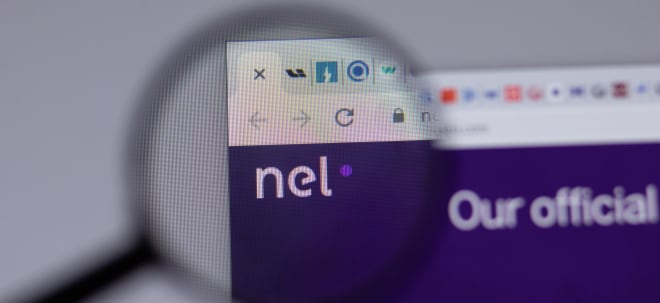National Survey: Major Differences Between the Budget That The Public Wants and What Congress Just Passed
COLLEGE PARK, Md., July 4, 2025 /PRNewswire/ -- As the One Big Beautiful Bill (OBBB) is signed into law, and major changes are made to spending and taxes, a new survey has found that the public would create a completely different budget. Majorities of both Republicans and Democrats would not extend the 2017 tax cuts for all incomes, make big cuts to Medicaid or SNAP (food stamps), nor increase spending on national defense or homeland security. On the contrary, they would raise taxes on high incomes, reduce defense spending, and keep spending on everything else about the same.
The national survey, conducted by the Program for Public Consultation (PPC) at the University of Maryland's School of Public Policy, allowed respondents to create their own federal budget by modifying spending levels and taxes, while seeing, in real-time, the effects of their choices on the current deficit.
Majorities of both Republicans and Democrats agreed on changes that would reduce the current deficit by $463 billion. Increases in taxes on very high incomes and wealth accounted for ninety percent of the total deficit reductions among both Republicans and Democrats. The OBBB is estimated to increase the projected deficit by about $340 billion a year.
Majorities of both Republicans and Democrats did not extend the 2017 tax cuts for income of $500,000 to $1 million (53% and 64%, respectively) nor for income of $1 million and more (56% and 67%). An overall majority (55%) and a majority of Democrats (62%) did not extend the tax cuts for income of $200-$500,000. The OBBB extends the 2017 tax cuts, which would have expired at the end of the year, for all incomes.
The two areas of congruence found between the public and the OBBB were on the proposals to eliminate income taxes on overtime (56%, Republicans 60%, Democrats 53%) and tips (60%, Republicans 66%, Democrats 63%). The OBBB does not fully eliminate income taxes on those forms of income, but instead provides limited tax deductions for both.
On Medicaid, the majority (54%) did not make any spending cuts. A modest majority of Republicans (54%) reduced Medicaid spending by just $8 billion – a 1.3% reduction from its 2024 level of $608 billion. The OBBB reduces annual spending on Medicaid by about $100 billion.
On the Supplemental Nutrition Assistance Program (SNAP, or food stamps), majorities of both Republicans (51%) and Democrats (72%) did not make any cuts. The OBBB reduces annual spending on SNAP by about $19 billion.
On national defense, large majorities of both Republicans (71%) and Democrats (83%) did not increase spending. Instead, the overall majority reduced defense spending by $60 billion, and a majority of Republicans cut it by $10 billion. The OBBB increases spending on the military by $150 billion.
On homeland security, which was described to respondents as including border protection and immigration, majorities of Republicans (60%) and Democrats (79%) did not increase spending. Instead, majorities of each party converged on a $2 billion cut. The OBBB increases the budget for homeland security substantially, primarily by providing $46 billion in additional funds for border wall construction and $59 billion for additional immigration enforcement (new detention centers and deportation operations).
"When Americans are given the chance to propose their own federal budget there is an enormous difference between what they want, which would reduce the deficit, and what has recently been signed into law, which will increase it," commented PPC Director Steven Kull. "Unlike in Congress, there is a remarkable amount of bipartisan agreement on key issues from raising taxes on very high incomes to limiting defense spending."
- Report: Americans on the FY2025 Budget
- Questionnaire with Toplines, Crosstabs and Methodology
- Summary Tables of Spending and Revenue Changes
- Take the Federal Budget Simulation Yourself
About the Survey
The survey was a "public consultation survey" in which respondents are provided briefings and arguments for and against proposals. Content was reviewed by experts from each side of the debate to ensure that the briefings are accurate and balanced and that the arguments presented are the strongest ones being made.
The online survey was interactive, giving respondents the opportunity to set their own federal spending and tax levels, while getting immediate feedback about the effect on the deficit. They were presented and able to modify spending levels for the main 32 areas of the discretionary budget, as well as the mandatory programs Medicaid and the Supplemental Nutrition Assistance Program (SNAP). They were also presented the revenue effects of changing the tax rates for various income levels (including by reverting rates back to pre-2017 tax reform levels), as well as other current proposals for reforming taxes, and were able to select their preferred options.
The survey was fielded May 30 - June 16, 2025 with 1,214 adults nationally. Samples were obtained from multiple online opt-in panels, including Cint, Dynata and Prodege. Sample collection and quality control was managed by QuantifyAI under the direction of the Program for Public Consultation. Samples were pre-stratified and weighted by age, race, gender, education, income, geographic region, marital status, and home ownership to match the general adult population. The survey was also weighted by partisan affiliation. The survey was offered in both English and Spanish. The confidence interval is +/- 3.0% and the response rate for the sample was 8.6%.
CONTACT: Katrina Fuller, kfuller@vop.org
![]() View original content to download multimedia:https://www.prnewswire.com/news-releases/national-survey-major-differences-between-the-budget-that-the-public-wants-and-what-congress-just-passed-302498324.html
View original content to download multimedia:https://www.prnewswire.com/news-releases/national-survey-major-differences-between-the-budget-that-the-public-wants-and-what-congress-just-passed-302498324.html
SOURCE Program for Public Consultation





